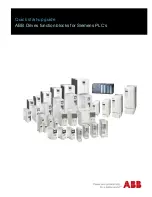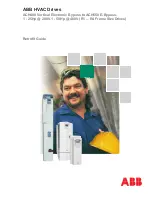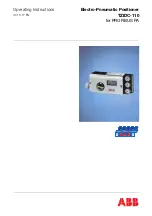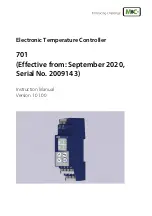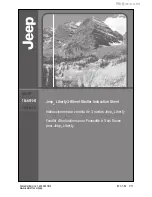
10
CNT-SVX13B-E4
Features
Communication
For optimal system performance, fan
coil units can operate as part of an
Integrated Comfort™ System (ICS)
building automation. The ZN
controllers are linked directly via a
twisted shielded pair cable to the
Tracer Summit™ building control
unit which acts as a communication
server. Direct integration of ZN
controllers into Tracer Summit™
allows for a highly flexible system
and additional features.
As an example, master/slave
interactions can be easily established
according to floor layout and can be
modified when this layout change
with very little specific engineering
requirement. ZN controllers are fully
compliant with LonMark
®
specification and are LonMark
®
certified. This means they can easily
be integrated into any Lon network,
Lon compatible BMS and complies
with SCC profiles as to increase
interoperability capability. Their
mandatory and optional network
variables can then be accessed with
any standard LonMark
®
tool. The
configuration of the controller can be
done through the use of any
software tool matching EIA/CEA 860
standard plug ins.
Peer-to-peer communication
Tracer™ ZN. uses LON
communication interface type
FTT - 10A.
It allows peer-to-peer (also referred
to as master/slave) data
communication. Data such as zone
temperature, setpoint, and
occupancy can be shared from a
master control to a peer control with
or without the presence of Tracer
Summit™. This communication
allows all units to operate with the
same data to prevent conflicts
between units (see figure 4). This
way of communication data between
devices is called "custom binding".
For futher detail, refer to the official
documentation LonWorks
®
FTT-10A
free topology transceiver user's
guide and to the official LonWorks
®
guidelines LonMark
®
layer 1-6
interoperability guidelines version
3.0. These documents and additional
information are available on the
Internet site www.lonmark.org.
Condensate overflow (J2-3 & J2-4 on
the controller)
For UniTrane fancoils and HFO/HFR
ductable units, if a condensate pump
is used with the unit (not supplied by
Trane), it is possible to connect the
condensate overflow switch to the
controller through this binary input.
When the condensation reaches the
trip point, the condensate overflow
signal will generate a diagnostic that
disables fan operation, closing all
unit water valves (when present),
turning off the electric heater (when
present). Although the condensate
overflow automatically resets when
the condensation returns to a normal
level, the unit needs to be restarted
manually. The overflow switch has to
be wired directly on the controller
input BI 2.
The binary input is factory
configured to normally open (NO)
so:
If the contact is open
➜
Normal
unit operation
If the contact is closed
➜
Unit
shutdown (need a manual restart).
For CWS units, the condensate pump
is factory-mounted and connected to
the controller. In this case, the binary
input is factory-configured to
normally closed (NC) so:
If the contact is closed=normal unit
operation
If the contact is open=unit shutdown
(needs a manual restart)
Generic I/O (on the controller)
Tracer™ ZN. unit controller comes
equipped with three generic points
for use with a Tracer Summit™
system:
• Generic Binary Input (Shared with
occupancy) (J2-5/J2-6 on
mainboard)
• Generic Binary Output (TB4-1/TB4-2
on mainboard)
• Generic Analog Input (4-20mA,
humidity sensor, CO² sensor or
other) (J3-7/J3-8 on mainboard)
The two generic inputs are only for
passing information to the BAS
system. They do not have any effect
on the unit's operation. The generic
binary output is controlled from the
BAS system and its state is not
affected by unit operation, even
under a diagnostic shutdown.
Содержание ZN. LonWorks control
Страница 34: ...Notes 34 CNT SVX13B E4...
Страница 35: ...Notes CNT SVX13B E4 35...


























